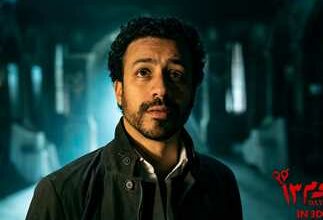A remake of the 80s cult classic A Nightmare on Elm Street was released across the globe on 30 April 2010 to commercial success. The film began screening in Egyptian cinemas on Wednesday, and fans of the genre, including myself, could not wait to watch it.
Director Wes Craven is known for his slasher horror films. You must have watched–or at the very least heard of–at least one of his iconic horror titles which include the Scream trilogy, The Last House on the Left (1972), The Hills Have Eyes (1977), Shocker (1989), as well as Nightmare on Elm Street and two of its seven sequels.
The body of Craven’s work has proved to be a great source for remakes over the past couple of years. French director Alexandre Aja’s remake of Hills Have Eyes (2006) pulled in almost US$110 million globally and spawned a sequel in 2007–to negative reviews and a positive Box Office income. The Last House on the Left (2009) would be another example of a remake of Craven’s work that got slashed by critics but became a smash hit among nostalgic fans of the genre.
Today’s film, a remake by director Samuel Bayer, is along the same lines and manages to pull the same effect on audiences and critics alike. The film is breaking records in the American Box Office, pulling in more than US$50 million in three weeks with rumors of a sequel already circulating.
Mainly, the storyline centers on Freddy Kruger, a notorious child molester who was killed 15 years ago at the hands of angry fathers and mothers. Now, like all iconic horror villains, he’s back for more. He is not only haunting the dreams of the children of his killers, but he’s killing them in a world from which they cannot escape: their dreams.
The villain wears his trademark red and green sweater and clawed glove. When he slashes his prey in dreamland, their wounds actually kill them in the real world. The film keeps the storylines of the original but changes the background into a modern-day setting. Text messaging and video blogging play a part in the film storyline to give it the “cool” factor, while the actors playing the main characters are famous teen-stars such as Twilight’s Kellan Lutz, Melrose Place’s Katie Cassidy and The Sarah Connor Chronicles’ Thomas Dekker.
Freddy Kruger is a tough character to play. The character appears in as many as nine different films, usually portrayed by Robert Englund. The character originally was vicious and violent, not offering much in the way of dialog–especially in his debut film. In later movies, however, a black sense of humor becomes a trademark of the serial killer. The Jackie Earle Haley portrait of the maniac character in the 2010 film brought back the darker version of the clawed killer with the deep voice and calm attitude–a much-welcomed change by the fans of the Wes Craven film.
But other changes in the film serve to ruin the premise of the original. The movie introduces a new term called “micro-naps,” for example, in which an insomniac teen can fall asleep with his eyes open long enough for Freddy to cross into the real world. This breaks the cardinal rule in Freddy’s world: lord of dreams he is, but he is powerless in the real world. Die-hard fans won’t like the change.
Generally, the film is watchable. Actor Jackie Earle Haley (Watchmen) gives fans a run for their money, and the slashier parts are well-made and superbly shot. The film’s commercial success is a sign that this remake could reboot the whole series into a brand-new franchise that stands on its own. I would not be surprised if the next installment gets the 3D treatment as well.




